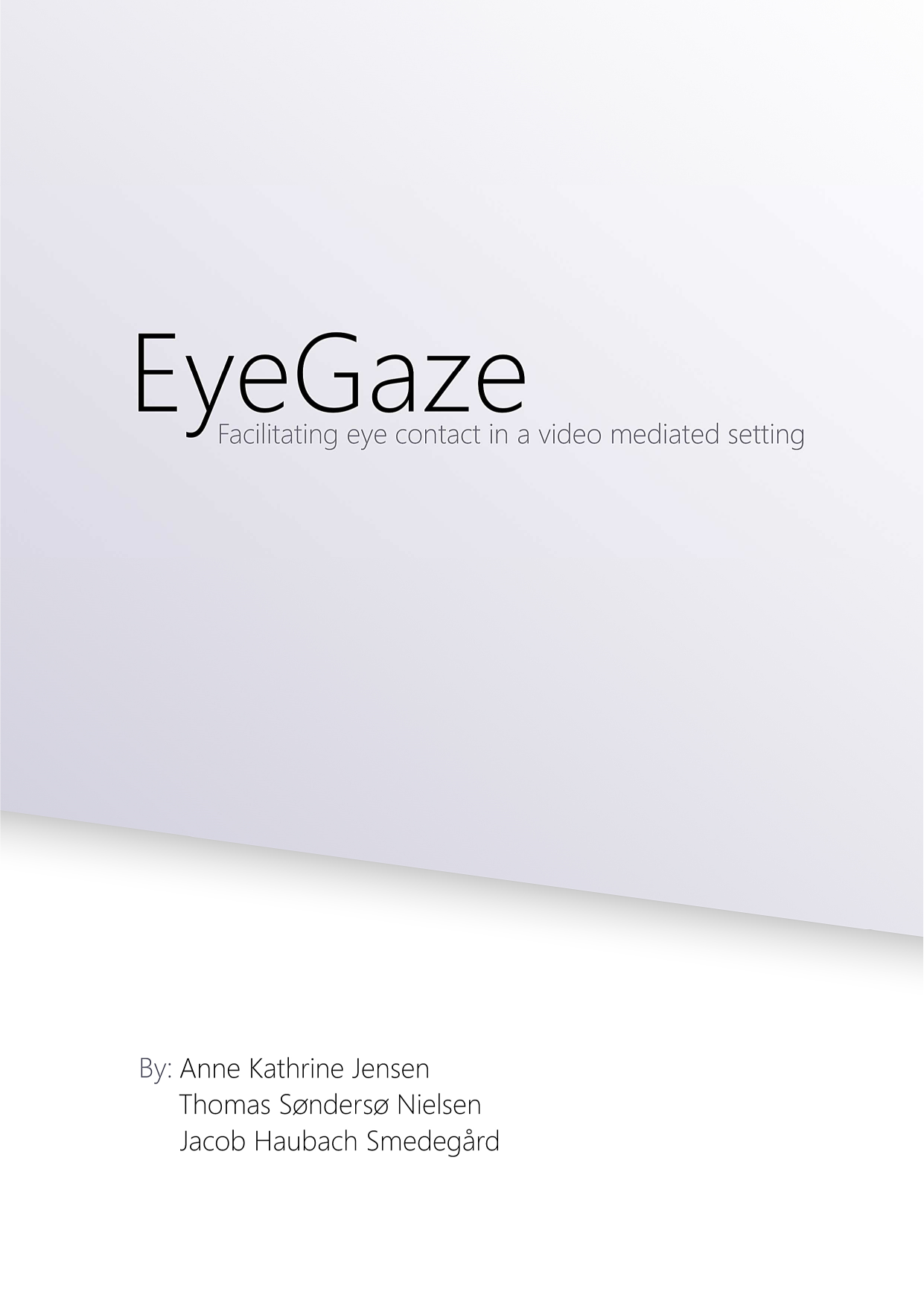
EyeGaze: Facilitating eye contact in a video mediated setting
Translated title
EyeGaze: Facilitating eye contact in a video mediated setting
Term
4. term
Education
Publication year
2013
Submitted on
2013-06-17
Pages
38
Abstract
In this Master Thesis we present a novel approach to video mediated communication called EyeGaze. EyeGaze facilitates eye contact in a conversation by rendering a person from a virtual perspective based on head tracking data of the observer. In a conventional video communication system, the camera is forced to be placed on top of, or to the side of the screen, due to the opaque nature of both the camera and the screen technologies. In order to obtain a sense of mutual eye contact, you would be required to look at two places at once, a feat most people would find challenging. EyeGaze solves this problem by using 3D depth sensing cameras placed strategically around the screen in order to capture the person in full real-time 3D. The 3D model is generated by merging depth frames from each camera into a single 3D model. We represent the 3D model as a voxel array in GPU memory, which facilitates merging new frames easily, as well as providing tolerance against missing data in the depth frame. Our main contribution spans two articles, one detailing the technical aspects of the EyeGaze implementation called “EyeGaze: Eye Contact and Gaze Awareness in Video” and one detailing a within-subject study of the EyeGaze system called “EyeGaze: A Comparative Analysis of Video Mediated Eye Contact”. Our technical article presents the EyeGaze system and frames it in related literature on video mediated communication and advancements made to facilitate nonverbal cues in such settings. The article then details the EyeGaze system and the implementational aspects of our prototype. Finally a formative assessment of the performance and quality of EyeGaze is presented. The second article presents a comparative study done on the EyeGaze system. We summarise the literature pertaining to the role of eye gaze in communication and studies which explore the effects of eye contact in virtual avatar representations. We then describe our within-subject study, the procedure, and the questionnaire which the participants answered directly after each session. Our findings are presented, showing that the EyeGaze prototype results in a significantly better sense of eye contact between the participants compared to a Skype video conversation. Other findings points to a better sense of involvement and turn-taking when using EyeGaze and a general positive bias towards EyeGaze in the responses.
Keywords
Eye contact ; Video mediated communication ; Microsoft Kinect ; Virtual viewpoint ; Study ; Within-subject ; Video link ; 3D reconstruction ; Voxel ; GPU ; GPGPU ; Graphics ; Empirical study ; Questionnaire ; Comparative study ; 3D scanning ; Skeletal tracking ; Raytracing ; Raycasting ; Head tracking ; Video conferencing ; Texturing ; Skype ; ANOVA ; EyeGaze ; Face gaze ; Gaze direction
Documents
